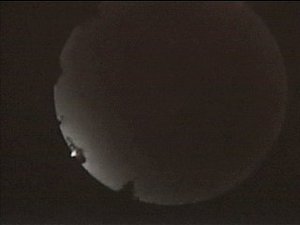A meteorite shower is suspected to have caused a spate of emergency calls off the coast of north-east England.
Coastguards were alerted to what appeared to be red flares being fired into the sky off Saltscar Buoy, near Redcar, Teesside, on Wednesday night.
A lifeboat was launched but the search was called off after a large number of similar calls came in along the coast, spanning from Tyneside to Humberside.

|
| ©MCA
|



Comment: This article quotes an Air Force officer, "planes aren't allowed to fly fast enough to create a sonic boom over U.S. land, except over some remote areas."